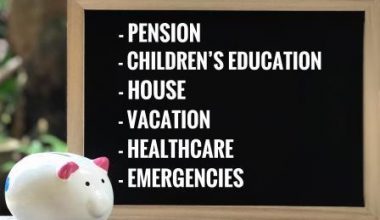The Index of Consumer Sentiments (ICS) increased by 2.25 percent in June. This is much better than expectations. We had expected the month to end with the consumer sentiments remaining largely flat compared to May. The monthly growth in consumer sentiments had been decelerating over several months and the weekly data suggested a continuation of the trend even in June. However, the final monthly estimates which are based on a larger sample than the weekly estimates show a much happier position.
A 2.25 percent growth in the ICS is a fair recovery from the tepid 0.9 percent growth in May and the sluggish trend seen in the initial weeks of June. It is also better than the 1.1 percent growth registered in June 2022. But the growth is lower than the average monthly growth of 2.8 percent recorded in the 12 months preceding June 2023. It is a good growth but not quite good enough.
The disappointment with the ICS is that even after over three years since sentiments were hit during the Covid-induced lockdown, it is still lower than its pre-Covid level. The ICS in the January-March 2020 quarter was at 103.7. In April-June 2023, the index was still 9 percent lower at 94.3. The index has a base of 100 in September-December 2015.
There are big differences in the consumer sentiments of households of different principal occupations. Households of farmers reported a fall in consumer sentiments. Compared to May, their sentiments index fell by 1.9 percent. Business persons reported a tepid 1.6 percent increase. Salaried employees did much better, reporting a 3.6 percent increase in their ICS. And daily wage labourers did even better with a 5.9 percent increase in their ICS.
Farmer-households were the only group of households that reported a fall in the ICS in June.
The ICS consists of two sub-indices Index of Current Economic Conditions (ICC) and Index of Consumer Expectations (ICE). Both indices fell for farmer households in June. The ICC fell by a substantial 3.5 percent and the ICE fell by 0.9 percent.
This fall in farmers’ sentiments reflects the substantial delay of a week in the onset of the monsoon and its erratic progression thereafter. By the end of June, the precipitation was 10.1 percent below the normal and sowing of kharif crop was up marginally, by 0.4 percent lower than it was a year ago. News of weather expectations in the remaining three months of the kharif crop season were not particularly encouraging. Prices of major cash crops cotton and soyabean were down. Other prices were higher but many, except bajra and jowar, faced uncertainty on the output.
Farmers are usually an optimist lot. Consumer sentiments among farmers have always been higher than that of the others. The ICS for farmers was always higher than that of salaried employees, business persons and daily wage workers. These are the four major occupation groups in Indian households.
The ICS for farmers was never lower than the overall ICS. On average, it was about 6 percent higher than the overall ICS between 2016 and 2019. Then, from June 2020, the ICS for farmers has risen much faster than the overall ICS. Since 2020, the ICS for farmers has been 16 percent higher than the overall ICS. Farmers lead the Index of Consumer Sentiments.
According to CMIE’s Consumer Pyramids Household Survey, there are about 86 million farmer households in India. They account for 26 percent of total 329 million households or 39 percent of the 221 million rural households.
Rural India is evidently a lot more than just farmer-households. Farm-dependent households will include agricultural labourer households. There are 21 million such households. Even if we add this, more than half of rural households are non-farm households.
This is relevant because rural India does not do as well as farm households do. Between January 2020 and June 2023, while the farmers’ ICS was 16 percent higher than the overall ICS, the rural ICS was less than 4 percent higher. Implicitly, non-farm rural households are not doing very well and there is a substantial difference between farm and non-farm rural households.
In June 2023, while the ICS of farmer households declined by 1.9 percent, the ICS for rural India as whole went up by 2.3 percent. Implicitly, consumer sentiments of non-farm households in rural India are improving while sentiments of farmer households in rural India are dipping.
It is possible to infer that save for the farmer-households, consumer sentiments picked up quite well in June. As mentioned earlier, consumer sentiments of salaried employees, daily wage labourers and business persons did quite well. We can now add that non-farm rural households also did quite well in June. This improvement in consumer sentiments possibly holds a promise of a turnaround in the monthly growth rate of the ICS since January 2023. Weekly estimates as we have noted above can be treacherous but for what they are worth, they too tell us that the decline in the growth rate may have stopped. The ICS grew by about 1.3 percent in the first two weeks of July. This is not great. But it indicates that the ICS is not decelerating.
The author is MD and CEO of Centre for Monitoring Indian Economy Pvt. Ltd







